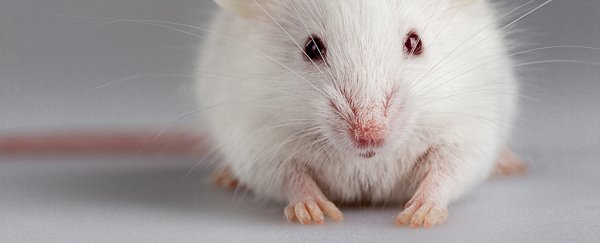Scientists have identified two proteins that can partially stimulate growth in amputated toes in mice, a discovery that puts us one step closer to one day being able to replace amputated limbs in humans.
While bone growth has been achieved before, the new research demonstrates signs of joint growth as well - this shows a level of complexity we haven't seen before. Both joints and bones are crucial if one is trying to bring back lost limbs.
Having previously regenerated bone in mice using the BMP2 protein, here the scientists added another to the mix: BMP9. When using the combination on mice with amputated toes, over 60 percent of the stump bones formed a layer of cartilage within three days. Without the proteins, the amputated toes would've healed over as normal.
That cartilage is a key part of joints, and shows definite progress in limb regeneration. Even in animals who can naturally regrow lost limbs, it's rare to see joint as well as bone growth.
"These studies provide evidence that treatment of growth factors can be used to engineer a regeneration response from a non-regenerating amputation wound," explain the researchers in their paper.
The results of the study showed that the regeneration process was most advanced when BMP2 was applied first, with BMP9 added a week after – in this case it led to the growth of more complete joint structures, even with some connections to the bone.
While we are a long way from regenerating full limbs in mice, never mind humans, we can only go one step at a time – and this is another of those steps. Humans are similar to mice in terms of the way our skeletons fit together, so this is possibly something that could be transferred over.
"Our study is transformational," one of the researchers, Ken Muneoka from Texas A&M University, told Yvaine Ye at New Scientist.
Muneoka suggests the research shows that cells in mammals can regenerate body parts, given the right prompting. "They can do it, they just don't do it," he says. "So, we have to figure out what's constraining them."
We're going to need plenty more research into how to 'switch on' these cells in the right way, but the team behind the study is hopeful. Ultimately the research might even help in treatments for joint degenerative disorders such as osteoarthritis – naturally replacing rather than transplanting cartilage.
It's a fascinating area of science, and we're learning a lot from lab-grown organs about how the process might be triggered more naturally.
Scientists are also taking inspiration from the animal kingdom – learning in more detail how the newt is able to regenerate limbs, for example (it's to do with triggering the right cells, as Muneoka suggests).
If we are eventually to develop treatments to replace lost limbs, the BMP2 and BMP9 proteins may well have something to do with it.
"These findings provide further support for the view that cells of a non-regenerative mammalian amputation wound retain the positional information necessary to re-build structures removed by amputation," conclude the researchers.
The research has been published in Nature Communications.
